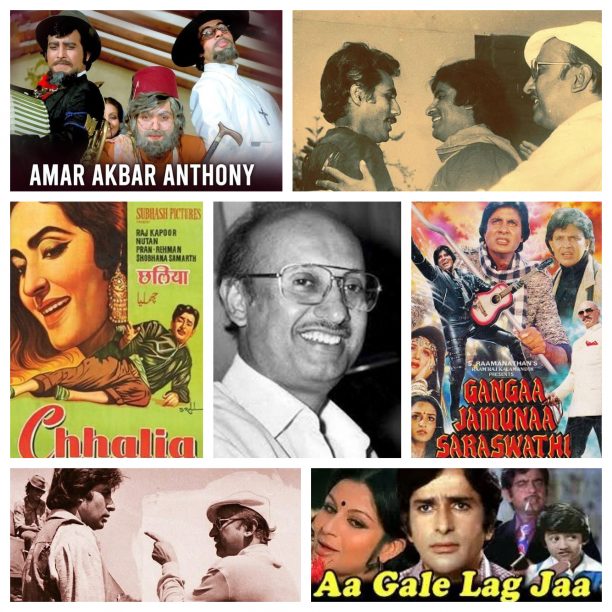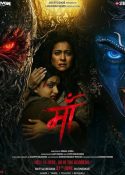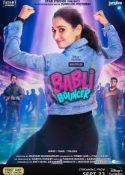 I was only 24 when I met Manmohan Desai. Just eight years later, this man who was full of joie de vivre was gone.
I was only 24 when I met Manmohan Desai. Just eight years later, this man who was full of joie de vivre was gone.
How? The suddenness of this happy-go-lucky man’s death drove all of us movie buffs up the wall. To me Manji, still seems like the least likely candidate for self annihilation.
Though his aching back was against the wall, literally, he held forth on man movies and life with an infectious zest. His comments on offbeat films and filmmakers had me in splits. His films were kitsch art, though catch him admitting to anything arty about his works! His cinematic world encompassed a utopia where high melodrama resolved itself magically. To his abiding exasperation critics insisted on searching for logic in his films.
The maverick moviemaker said to me, “Do they realize how much brains and money are needed to make my kind of films? I really enjoy what I’m doing. I’m on the sets all the time. I’m not the kind of filmmaker who functions from the background. My attitude towards cinema is very serious. I’m involved with every department of filmmaking except photography. I rarely attend parties. I don’t smoke or drink. My passion in life is filmmaking. According to critics, if you make anything escapist, it isn’t serious cinema. Only gloomy and dull films are serious! But my kind of films require lots of brains.”
That was Manji, straight from the hip, where he suffered shooting pains. His back was giving him hell. “Someone told me about a chap who cures bad backs with a kick. I’m ready to offer him a lakh for doing this. But if I don’t get cured, I will kick him back,” Manji chuckled.
This was in 1986. Today he would have offered a crore to have his back cured. If he was still alive.
The Big If! If only Manji had lived, David Dhawan wouldn’t have been thrust down our throats with such nagging frequency. When I met him, Manji was worried about the poor collections of his son’s film Toofan. “I’m the monster in Ketan’s life. I’ve already done everything there’s to do with Amitabh. What’s left for Ketan to do?”
Ironically Manji described his best–known collaboration with the Big B , Amar Akbar Anthony, as “shit”. He preferred Naseeb, Coolie, and even Mard. But his personal favourite was the non-Bachchan starrer Aa Gale Lag Ja. When cynics laughed at the whole concept of Shashi Kapoor impregnating Sharmila Tagore by giving her “body heat,” Manji bellowed back , “What the hell do they mean by escapist films? I make what I like. I love Mother India. Every time I see it I get an inferiority complex.”
Ignoring the sniggers, he did the ‘body heat’ act again in his last directorial venture Ganga Jamuna Saraswathi with Mr Bachchan and Meenakshi Sheshadri.To drive in the point he even showed us a cob web while the lead pair gave each other garmi in a barn. He defended every film of his like a lion protecting his cubs. He admitted the lost-and-found formula started in Kismet in 1943 and that it was a convenient peg to hang his ideas.
His favourite actors were Raj Kapoor, Nutan, Lalita Pawar, Nirupa Roy and of course Amitabh Bachchan. For his first film Chalia in 1960, he signed Raj Kapoor and Nutan. Then followed the ill-fated Bluff Master and Budtameez. Both Shammi Kapoor starrers bombed miserably. His harvest of hits started with the espionage thriller Kismat in 1968. For the first time, a leading man(Biswajeet) did a drag-act in Kismat. After Shamshad Beghum sang ‘Kajra mohabbat wala’ for Biswajeet, she never sang again for a Hindi film.
Sachcha Jhooth in 1971 won Rajesh Khanna his first Filmfare award. The next year, Manji had three releases: Bhai Ho To Aisa, Rampur Ka Lakshman, and Sharaarat. The first 2 were hits. Roti in 1974 was one of Rajesh Khanna’s last major successes as a leading man.
1977 was a watershed year for Manji. Four of his big-budget spectacles—Amar Akbar Anthony, Chacha Bhatija, Parvarish, and Dharm-Veer—were blockbusters during this year.
Said Manji, “Amar Akbar Anthony involved my minimum effort, labour and money. It was a fluke hit. When it was released, I thought it had good songs. But I never thought it would be such a success. I was sure Aa Gale Lag Jaa would be a superhit while Amar Akbar Anthony would flop.”
Naseeb in 1981 was Manji’s most expensive film, followed by Suhaag and Desh Premee. In 1983, during Coolie when the Big B suffered his near-fatal accident Manji had to give in to popular sentiments and let his hero live at the end. “Audiences would have been very disappointed if after the accident Amitabh was shown dying at the end of Coolie,” confessed the emotional filmmaker.
After Mard in 1985 and Ganga Jamuna Saraswathi in 1988, Manji retired from movie making. Those close to him say he had secretly become depressed in his final days. The plot for Amar Akbar Anthony was inspired by a newspaper report about a man who left all his 3 children at different places and then committed suicide. “What if the man didn’t kill himself?!” Manji wondered.
And we wonder the same about him. The Big B, who was so close to him, once said, “Manmohan Desai was the genius who had the audacity to tell the audience in the very first frame, ‘I’m going to make a fool of you. I’m going to be illogical, and you had better enjoy it. Magically, the audience did. He had no pretensions. The audience knew he believed in the improbable and went along with him. They just loved him.”










